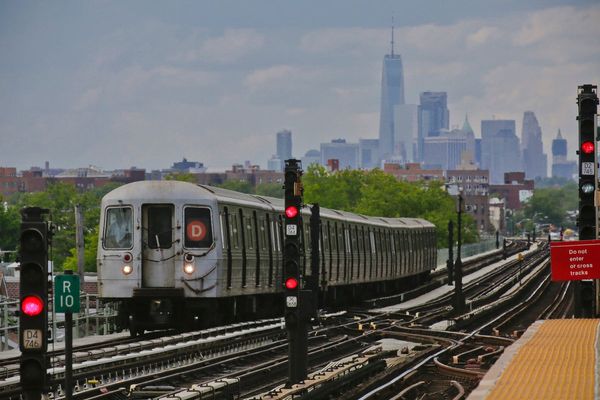
By Julian Ryall
As Japan prepares to mark the 10-year anniversary of the most destructive natural disaster in its recorded history and the nuclear accident that it triggered, the operator of the Fukushima Daiichi power plant has expressed confidence that efforts to decommission the site are on schedule.
Anti-nuclear campaigners are critical of that position and insist that Tokyo Electric Power Co.’s plan to complete the decommissioning of the three reactors that suffered meltdowns has “no prospect of success and is delusional,” while people living in areas that were directly beneath the plume of radioactivity in March 2011 say their lives have been changed irreparably and forever.
The crisis at the Fukushima nuclear plant followed the magnitude-9.1 Great East Japan Earthquake on the afternoon of March 11, 2011. The quake, the fourth most powerful anywhere in the world since modern record-keeping began in 1900, caused a series of tsunami waves that in places reached more than 40 meters high and bore down on the coast of northeast Japan.
‘People shouldn’t be told that it’s safe to come back’
The tsunami broached the nuclear plant’s sea defenses and flooded the lower parts of four of the site’s six reactor buildings, causing the failure of emergency generators required to keep water pumps circulating cool water for the reactors. The overheating of the reactor cores caused three of the units to suffer meltdowns, with operations of the fourth unit suspended for maintenance at the time of the disaster.
In the days after the accident, the government ordered the evacuation of more than 154,000 people living in surrounding towns and villages. Plans were also quietly drawn up for the evacuation of a vast swathe of the north of Japan in the event that one or more of the reactor chambers was breached and released vast amounts of radiation into the atmosphere.
That scenario never came to pass, although the Fukushima accident is still classed as the second most serious nuclear accident in history, behind the Chernobyl disaster, and experts estimate that around 18,000 terabecquerels of radioactive caesium-137 were released into the Pacific Ocean, along with varying amounts of strontium, cobalt, iodine, and other radionuclides.
Nobuyoshi Ito ignored requests from the authorities to leave his home on the outskirts of the town of Iitate after the disaster a decade ago. He insisted that he was already old, that the radiation would be unlikely to impact his longevity and that he needed to remain to serve as a human test subject.
Now 76, he has spent the last decade monitoring radiation levels in the surrounding hills, as well as in crops that he grows and wild fruit and vegetables.
“Three years ago, they lifted the evacuation order and they have been encouraging people to return ever since,” he told DW. “I’ve been recording the radiation levels since the accident and they have certainly gone down, but the soil here will be contaminated for years to come. People should not be told that it’s safe to come back because I do not believe it is.”
Complex nuclear decommissioning project
Akira Ono, the head of the Fukushima site and chief decommissioning officer, said in an interview this week that there is no need to revise the target of completing work to render the reactors safe, which has been set at between 2041 and 2051.
“We will stick to the 30-to-40-year finishing target and will compile a timeline and technology and development plans accordingly,” he told the Associated Press.

That is despite new revelations that levels of cesium on the primary containment chambers of two of the reactors are far higher than previously believed, which will further complicate the decommissioning work. Also, much remains to be discovered about the melted fuel that fell out of the core to the base of the containment chambers of the three reactors.
And even though no nuclear decommissioning project of the scale of Fukushima has ever been attempted before and, in some areas, the technology has yet to be developed to enable the work to be completed, TEPCO intends to press ahead with its efforts and is due to release an updated roadmap of its efforts before the end of March.
A decade of deception and delusion?
Shaun Burnie, a nuclear specialist for Greenpeace East Asia, insists there is no likelihood of TEPCO’s schedule being met and that the authorities are continuing to ignore the risks to people’s lives.
“Successive governments during the last 10 years … have attempted to perpetrate a myth about the nuclear disaster,” he said in a statement to DW. “They have sought to deceive the Japanese people by misrepresenting the effectiveness of the decontamination program and ignoring radiological risks.”
“At the same time, they continue to claim that the Fukushima Daiichi site can be returned to ‘greenfield’ status by mid-century,” he said. “The decade of deception and delusion on the part of the government and TEPCO must end. A new decommissioning plan is inevitable, so why waste more time with the current fantasy?” he asked.
According to research conducted by Greenpeace, just 15% of the 840 square kilometers (324.3 square miles) identified as being most contaminated from the nuclear fallout has been decontaminated, while the towns of Namie and Iitate, which the government announced were safe for evacuees to return to, still have radiation above safe levels.
Burnie said a “fundamental rethink in approach and a new plan” for the decommissioning of the site is required. The least bad choice, Greenpeace believes, is to keep all material that has been contaminated with radiation on site indefinitely, including the nuclear fuel debris, “if it is ever retrieved.”
“Fukushima Daiichi is already and should remain a nuclear waste storage site for the long term,” he concluded.
This article was originally published on Deutsche Welle. Read the original article here.
READ NEXT: Taiwan’s Domestic Pineapple Consumption Closes Gap From China’s Ban
TNL Editor: Bryan Chou (@thenewslensintl)
If you enjoyed this article and want to receive more story updates in your news feed, please be sure to follow our Facebook.







